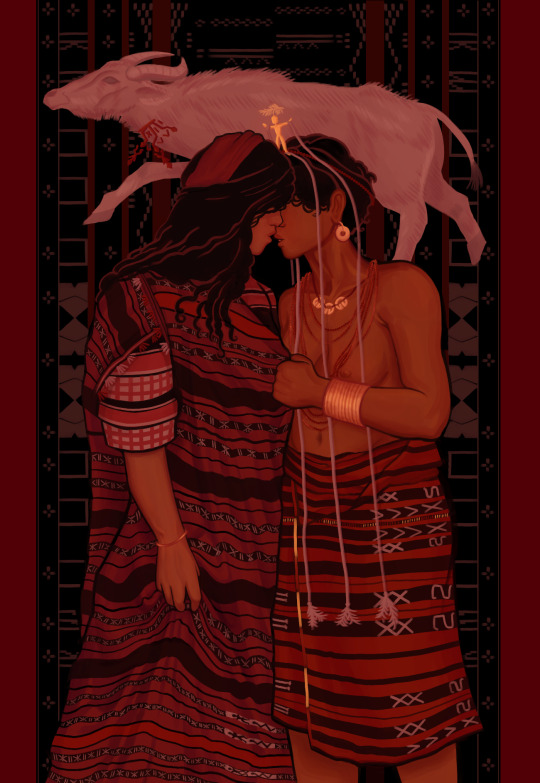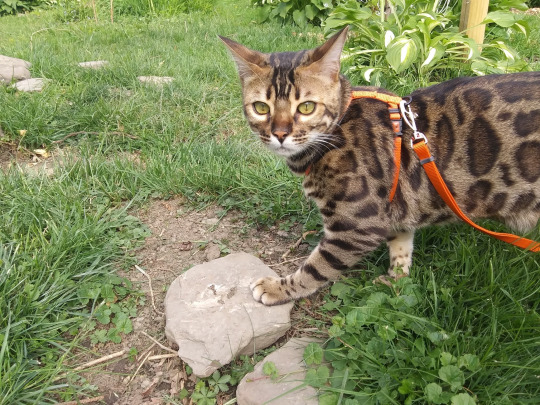#ifugao
Explore tagged Tumblr posts
Text

hay naminhod kun he-a ya maid di kiingngohana (my love for you is beyond comparison)
happy international lesbian day <3
[mlm version]
#igorot#ifugao#ibaloi#philippines#filipino#artph#indigenous#gay#lgbt#lesbian#wlw#sapphic#digital art#original art#original characters#artists on tumblr#bare chest /#animal death /#mankadavi#2023#with id#companion piece to my gay mlm igorots drawing! will post together later :)#1k
2K notes
·
View notes
Text
Ifugao men in the Philippines







Ifugao かわい~
29 notes
·
View notes
Text

Ifugao Elder. Banaue, Luzon, Philippines - Morgan Silk
5 notes
·
View notes
Text
round 2 - day 2 - 7 of 8

brought to you by: jahzeel
poha (ifugao) vs cicuska (hungarian)
info and propawganda under the cut!
poha - no IPA provided
It’s very cute! My parents were peace corps volunteers in the Philippines and, being very creative in pet names, called their cat “Poha”! Sadly, poor Poha was eaten by local children, so she deserves to be memorialized here lol
cicuska /t͡sit͡suʃkɒ/
It's the diminutive for cica (cat) and it sounds like babuska which makes it great. Also i love saying it. Honorable mentions to macska and macseszka which are also hungarian words for cat, i love this language
26 notes
·
View notes
Text
The big questions archaeologists want to answer also shape the value of their finds. They want to fill in the missing pieces of human history, and sometimes the newer pieces help complete the puzzle. Protecting and studying our entire past, not just the oldest parts, helps us get a full picture of how humans have lived and changed through time. So, in archaeology, it’s not just about discovering the oldest artifacts; it’s about uncovering and understanding the fullness of human history.
As an example, research in Ifugao confronts the prevailing notion that the antiquity of a site is its most defining feature. Previous studies have proposed that the terraces were to be at least 2,000 years old. However, Acabado and Martin’s studies suggest a more recent origin, around 1600 CE, coinciding with Spanish colonization. This new date does not remove the terraces’ significance but rather refocuses their historical narrative.
The terraces are not relics of the past; they are a testament to the Ifugao’s resilience and ingenuity. The revised dating indicates the Ifugao’s remarkable response to colonial incursion, a physical manifestation of cultural identity and resistance. Understanding these terraces as a relatively recent innovation underscores their role in Ifugao society’s adaptive strategies to external pressures.
This perspective challenges deep-seated assumptions about the value of ancientness in archaeological sites. It emphasizes the historical events that shaped the terraces and the community that created and maintained them. In doing so, it connects the past to the present, ensuring the terraces’ continued relevance to the Ifugao people’s living culture and their ongoing story of resistance, adaptation, and survival.
… Thus, the concept of prehistory, which implies a disconnection from the present, undermines Indigenous and local histories. Current research in Ifugao demonstrates a continuous historical thread that is woven into the fabric of Ifugao society. This continuity is manifested in the enduring rice cultivation practices and rituals that have been passed down through generations.
12 notes
·
View notes
Text
The Rice Terraces Of Banaue: A Stay Of Two Halves
#travelphotographer#Banaue#Batad#Eighth wonder of the world#Ifugao#independent travel#Mountain towns#Mountains#Philippines#Rice terraces#Shear line#traveljournalist#UNESCO
1 note
·
View note
Text
itetem song translation
itetem is a song that talks about someone who has returned home after a long time.
youtube
i couldn't find any english translation of this folk song on the internet so here it is !
note: i did not translate this, credit to my mother <3




in the first verse, since ifugao houses are on stilts to enter the house you climb the ladder !
0 notes
Text

Bulul: Guardian of the Harvest
The bulul, or "Ifugao rice God", is curved ancestor figures that serve as a rice diety and guardian of the rice crop. These wooden rice guardians, often carved from narra or ipil wood, are more than just works of art; they are sacred objects entrusted with the power to good harvests and protect their rice fields.
These sculptures offer insights to the Ifugao people's artistry and craftsmanship, spritual significances, and cultural legacy. In this time, the Bulul has gained recognition as an iconic symbol of Philippine heritage. Some bulul version are now made for tourist visiting the province of Ifugao.
0 notes
Video
youtube
Our travel to Lamut, Ifugao brings us immense joy as we share Miira Cell Plus - Plant Based Stem Cell Therapy. We pray that by sharing Miira Cell Plus, we can help improve the lives of many, especially for those experiencing various health challenges.
Green Apple Stem Cell Therapy has several health benefits. It protects skin cells from damaging UV rays and promotes the formation of new healthy skin cells to prevent age-related skin degradation². The therapy also repairs damaged tissues and organs, activates your skin stem cell regeneration, and combats chronological and genetic aging and deep wrinkles. The benefits are accumulative, meaning the longer you use it, the better the results will be. It also increases skin's cell vitality and longevity.
We are looking for partners in the area who can help us share Miira Cell Plus. Please Contact: Ednalyn P. Balino - +63 945 570 8711
Like, Follow, and Share Us on our Social Media:
https://www.facebook.com/Ednalyn1919 https://www.instagram.com/greenstemcelltherapy/ https://www.tiktok.com/@greenapplestemcell https://www.tumblr.com/blog/greencelltherapy https://www.pinterest.ph/rossano777/ https://www.tumblr.com/blog/greencelltherapy Read Our Blog and Be Inspired: https://greencelltherapy.blogspot.com/ https://npjbusiness.blogspot.com/ https://rossanosalvosaalmonia.blogspot.com/ https://greatideasinfinitepossibilities.blogspot.com/ https://greencelltherapy.tumblr.com/
#youtube#stemcelltherapy#stemcellresearch#aging#healthspan#lifespan#cagayan#isabela#vizcaya#cordillera#nuevaecija#ifugao
0 notes
Text
Archaeology of Pericolonialism
Acabado, S. (2017). The Archaeology of Pericolonialism: Responses of the “Unconquered” to Spanish Conquest and Colonialism in Ifugao, Philippines. International Journal of Historical Archaeology, 21(1), 1–26. https://doi.org/10.1007/s10761-016-0342-9
Blumer, H. (1932). The Half-Way Sun: Life Among the Head-Hunters of the Philippines. R. F. Barton. The American Journal of Sociology, 37(4), 691–691. https://doi.org/10.1086/215838
Kaut, C. (1967). Social Change in a Philippine People [Review of Mountain Arbiters. The Changing Life of a Philippine Hill People, by E. P. Dozier]. Science, 156(3783), 1722–1723. http://www.jstor.org/stable/1722263
Phelan, J. L. (1967). The Hispanization of the Philippines : Spanish aims and Filipino responses, 1565-1700. University of Wisconsin Press.
Above are the citations toward the topic of Pericolonialism in Ifugao, Philippines, caused by the Spanish Conquest. Specifically, the evidence of colonialism in Ifugao came from the archeology of wet-rice, ceramics, and buffalos. Evidence of the transition from taro to rice being used as the area’s main source of carbs came to show a lot in how the population was trying to handle or fight against the colonists and its effects. Same goes with the evidence found on the increase of exotic goods, as well as the buffalo and pig remain to support more feastings among the Ifugao. The archeology of Ifugao comes to show that while the Spanish Conquest failed during earlier attempts to colonize and bring Philippines under its umbrella, it did not fail to change the economic and political standards of surrounding towns or tribes. The effect of colonialism comes before the event of official conquering of the country.

0 notes
Text

karamak taytayni (don't leave me)
[wlw version]
#file name for this was titled 'gay igorots' btw. if you care#igorot#ifugao#ibaloi#philippines#filipino#artph#indigenous#gay#lgbt#digital art#original art#original characters#artists on tumblr#bare chest /#animal death /#mankadavi#2023#with id#mlm
619 notes
·
View notes
Text
Ifugao
Magangdang umaga po!
卒論に向けての研究の第一歩として、6/11にイフガオ州ラガウェで行われた、Gotad Adというお祭りを見に行きました!
会場であるラガウェは、私が研究するDinuy-aという伝統舞踊の発祥の地であり、イフガオ州の中心部に当たるバナウェからジープでさらに1時間ほど南下します。
メイン会場のDon Bosco高校の体育館では、6月1日から18日まで、踊りの他にも芸術作品の展示やバイクレースなど様々な催しが行われており、その周辺には出店や屋外展示などがたくさん並んでいてとても活気がありました!

伝統舞踊のパフォーマンスの様子。
この踊りはラガウェで始まりイフガオ州に広まったため、同じ踊りでも州内の地域によって表現方法が微妙に違っているそうです。私の地元・徳島には阿波踊りがあるので、同じ阿波踊りでも連によって踊り方や構成が違うのと似ているなあと思いました^^
今回の催しはコンペティション形式で、それぞれのグループは地域を代表しており、画面中央右に写っている審査員が最も優れた演技を決定するそう。アリーナを囲むように椅子に座っているのは出番に向けて待機している他の地域の踊り子です。

最も印象に残ったのは、鶏を使った踊り、、
手を話すと鶏が飛んで行ったり、生き物を使った踊りが私には衝撃的でした...!
今回は突然決まった訪問だったので長く滞在することができず、世界遺産の棚田すら見ないで帰ってきてしまいました💦
私を連れてきてくれたガイドさんのお友達をつたって、祭りがあったところとは少し離れた地域に泊まり、現地の生活を体感する貴重な経験もできたので、それについても機会があれば書こうと思います!
次の訪問は今回できたつながりを頼りにもう少し長く滞在する予定なので、舞踊についてももう少し詳しく知ることができればいいなと思います!!
Ifugao
Hello!
I went to Lagawe municipality, Ifugao province on 11th June and saw the festival there!
That was my first step for my research about the traditional dance in Ifugao.
Lagawe is the municipality where the Dinuy-a dance was born. It takes about 1 hour by jeepney from Banaue, which is the center of Ifugao, to go there.
There were also exhibitions of arts and bike races and so on at the gym of Don Bosco High School. And then outside, they have lots of street foods or exhibitions that express characters of each municipality in Ifugao.
I’ve mainly seen dance performances held there.
Dinuy-a dance was born in Lagawe and then spreaded among Ifugao, so these are a bit different depending on the municipality. My home town Tokushima also has their own traditional dance named Awaodori, each group also has different ways of dance. I ‘ve been thinking there are similarities.
This event is a competition and each group is on behalf of their own municipality. There are judges in front of dancers and dancers from other municipalities are sitting around and watching them.
The most impressive thing is that some of them are holding chicken during the dance and sometimes they are flying! It was surprising for me to use a living creature in their performance!
I couldn’t stay long and even see rice terraces which is their signature. Guide accompanied me and I stayed at his friend's house located in Kiangan and Asipulo. I’m happy to experience the lifestyle of a provincial city and I hope I will be able to write about that sometime.
Next time I will stay there more long so I will proceed my research more:))
0 notes
Text
Urpi Ritual by Mumbaki at Brgy. Kinakin, Banawe, Ifugao
The video I am sharing on our vlog details our journey from Star Mall San Jose del Monte, Bulacan to Brgy. Kinakin, Banawe, Ifugao. The BSB (Bahay Siadtala Binabaylan), along with Apu Adman Aghama, have been invited by our Spiritual Mumbaki Brother, Ka Mamerto Tindongan, and Ate Jennelyn Nanglihan to attend their “urpi” ritual. This ceremony will be held at their sacred site in Brgy. Kinakin,…

View On WordPress
#bahay siadtala binabaylan#banaue#banawe#Binabaylan#bsb#Filipino Magick#Filipino Pagan Priest#ifugao#igorot#kinakin#Luntiang Aghama#mumbaki#SiAdTala
1 note
·
View note
Text

1978 Philippines, Luzon, Banaue, Ifugaos
#1978#Philippines#Luzon#Banaue#Ifugaos#vintage#analog photography#film photography#1970s#photography#original photographers#streetphotography#color photography#pierre wayser
11 notes
·
View notes
Text

Hi, Filipino here. Our traditional attire does not look like this nor does the music for Tinikling sound like that. I grew up doing cultural performances of many Filipino traditional dances, including Tinikling, and this is NOT Tinikling. Shoutout to @mindsey-moonbow whose comment is probably going unnoticed in the notes.
#malaysia#malaysian culture#Magunatip#malay traditional dance#murut people#now i may not be the most ''filipino'' filipino around. i am only half but i grew up in the country and and learned as much as i could#about my ancestors. my mother's province and the other tribes of this country. and i have never seen this in my life#even the Ifugao and the Igorot don't look like this. yes we do have feather headdresses but not like this#i saw video and thought wow that's similar to tinikiling but it's not then i saw the comment and thought no... that's NOT tinikling#went to the notes to see if anyone corrected and and lo and behold i had to scroll to far to find out it was Malaysian#yes there are a lot of similarities between many SEA countries. but just because they're similar doesn't mean they're the same#oh and if you're tagging this Native American... for shame
77K notes
·
View notes
